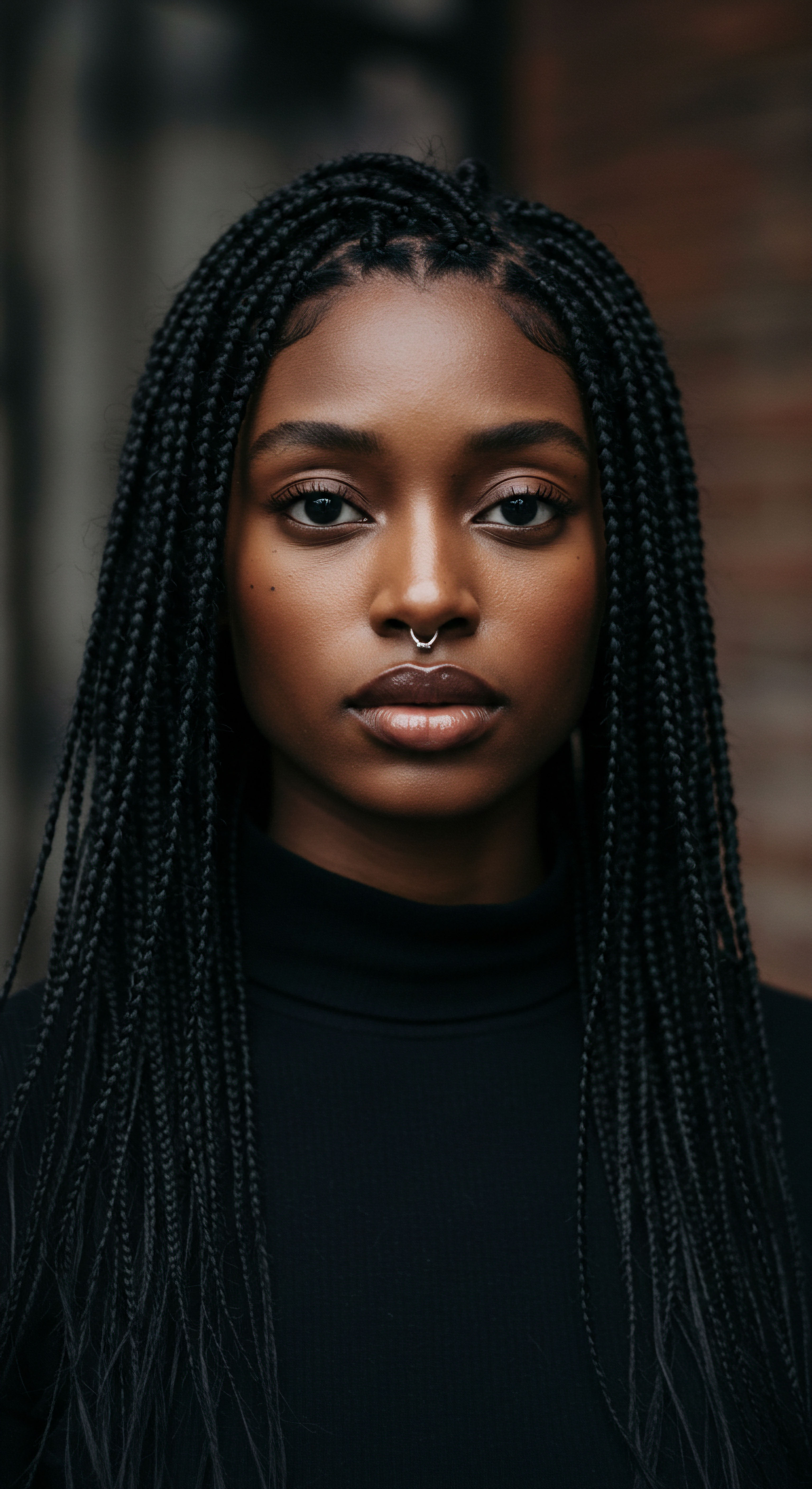
Roots
As the sun dips below the horizon, painting the sky in hues of lavender and soft rose, a quiet transformation begins for many with textured hair. This moment offers not just rest for the body, but a precious opportunity for hair to reclaim its strength, to drink deeply from restorative practices. The tools chosen for this nocturnal vigil stand as silent guardians, steeped in a history of care and an understanding of our strands’ delicate needs. They are not simply items, but extensions of a mindful approach to hair well-being, born from generations of wisdom and a deep connection to hair’s natural inclinations.
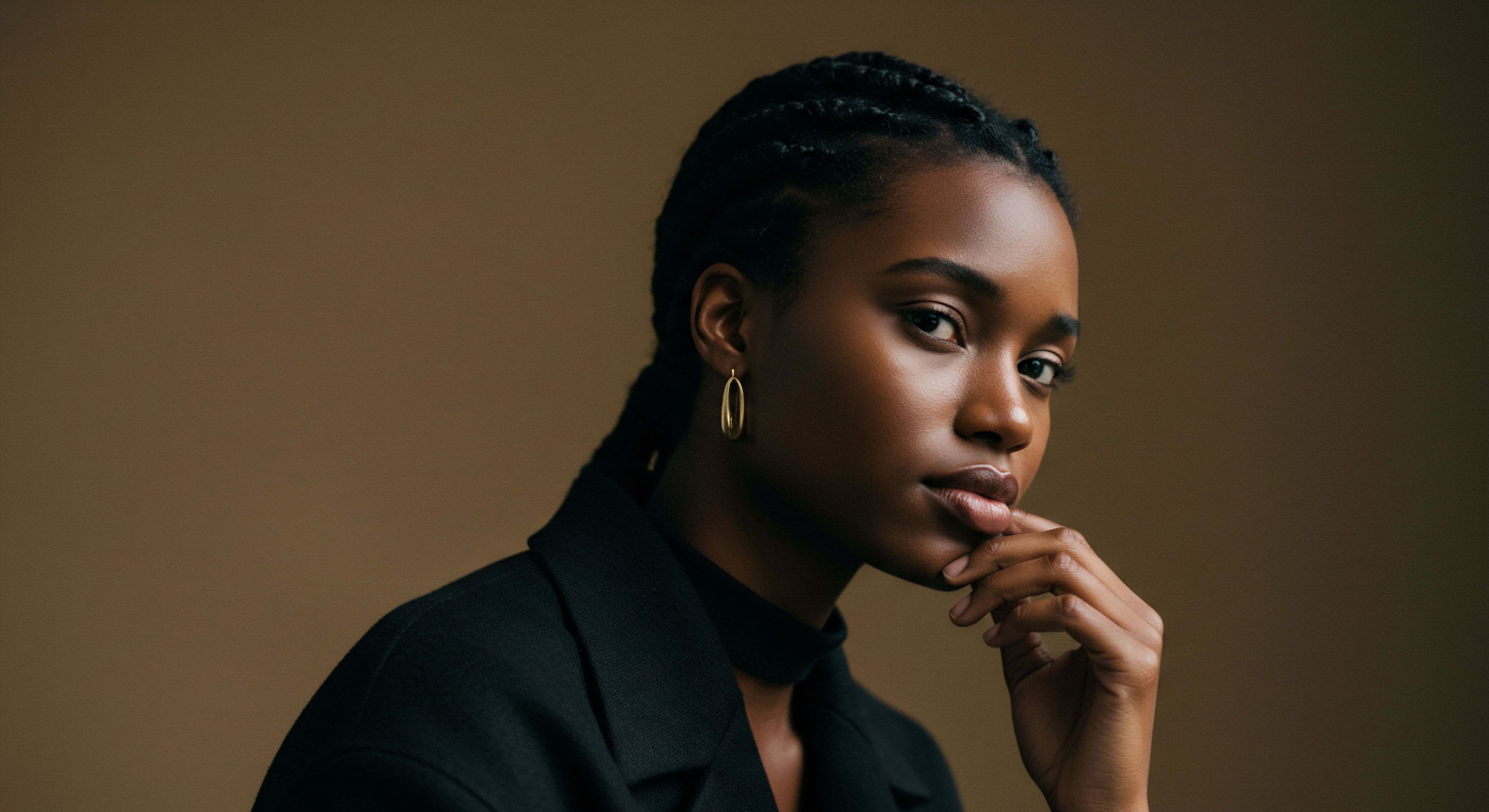
The Silent Battle Overnight
While we sleep, our hair often contends with unseen forces. The friction against traditional pillowcases, the absorption of precious moisture, and the potential for tangling all present challenges to hair health. These seemingly small nightly aggressions accumulate, leading to concerns like breakage, frizz, and diminished vibrancy over time. Understanding these underlying dynamics forms the groundwork for appreciating the thoughtful selection of night care tools.
The cuticle, the outermost layer of the hair shaft, acts as a protective shield. When friction occurs, this delicate layer can lift or chip, exposing the inner cortex and making hair more vulnerable to damage and split ends.
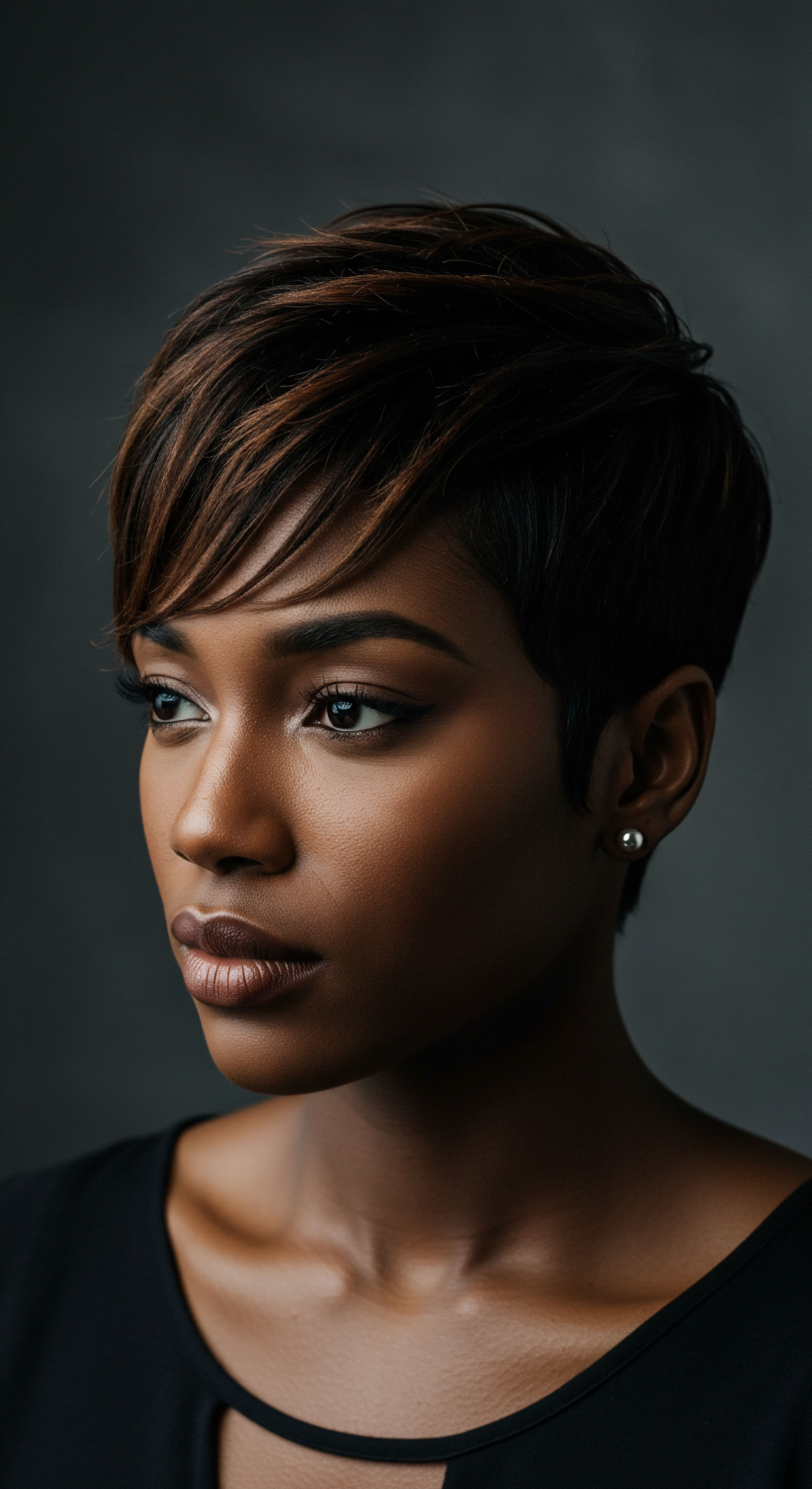
Hair’s Unique Needs During Rest
Textured hair, with its unique coil patterns and often higher porosity, is particularly susceptible to moisture loss and mechanical damage. Its structure means more points of contact for friction and a greater surface area for water to escape. Thus, the night hours, when the hair is left undisturbed for extended periods, present a prime opportunity to mitigate these vulnerabilities.
The aim is to create an environment where hair can retain its hydration, maintain its structural integrity, and minimize the physical stress that can lead to unwelcome changes in appearance and feel. Adequate sleep also plays a role in overall hair health, as the body undergoes repair and regeneration processes, including those related to hair follicles, during this time.
The quiet hours of sleep present a vital opportunity to shield textured hair from environmental stressors and mechanical friction.

The Historical Whisper of Protection
The practice of covering hair at night is not a recent innovation; it carries echoes of ancestral wisdom. Across various cultures, particularly within the African diaspora, head coverings have long served purposes beyond mere adornment. They have been symbols of identity, status, and, crucially, protection. From the geles of the Yoruba in Nigeria to the dukus of Ghana, and the ‘doek’ in South Africa, these coverings have been part of daily life.
During the era of enslavement, headwraps, while sometimes imposed as markers of social hierarchy, were also ingeniously reclaimed by Black women. They became tools of silent communication and a means of preserving dignity and cultural connection, even as they offered practical protection from sun, sweat, and grime. This historical continuity lends a profound depth to the modern understanding of night care tools, connecting contemporary practices to a rich legacy of self-preservation and beauty. The act of wrapping one’s hair at night, therefore, carries a subtle resonance, a continuation of a practice that speaks to both practical need and a quiet reverence for one’s strands.
| Cultural Origin Yoruba, Nigeria |
| Traditional Name Gele |
| Primary Purpose Beyond Adornment Symbol of wealth, status, and identity |
| Cultural Origin Ghana |
| Traditional Name Duku |
| Primary Purpose Beyond Adornment Daily wear, protection, and cultural identification |
| Cultural Origin South Africa/Namibia |
| Traditional Name Doek |
| Primary Purpose Beyond Adornment Protection from elements, cultural marker |
| Cultural Origin Enslaved African Women (Americas) |
| Traditional Name Headwrap/Tignon |
| Primary Purpose Beyond Adornment Protection from sun/grime, covert communication, defiance against oppression |
| Cultural Origin These coverings represent a long-standing tradition of protecting and valuing textured hair. |
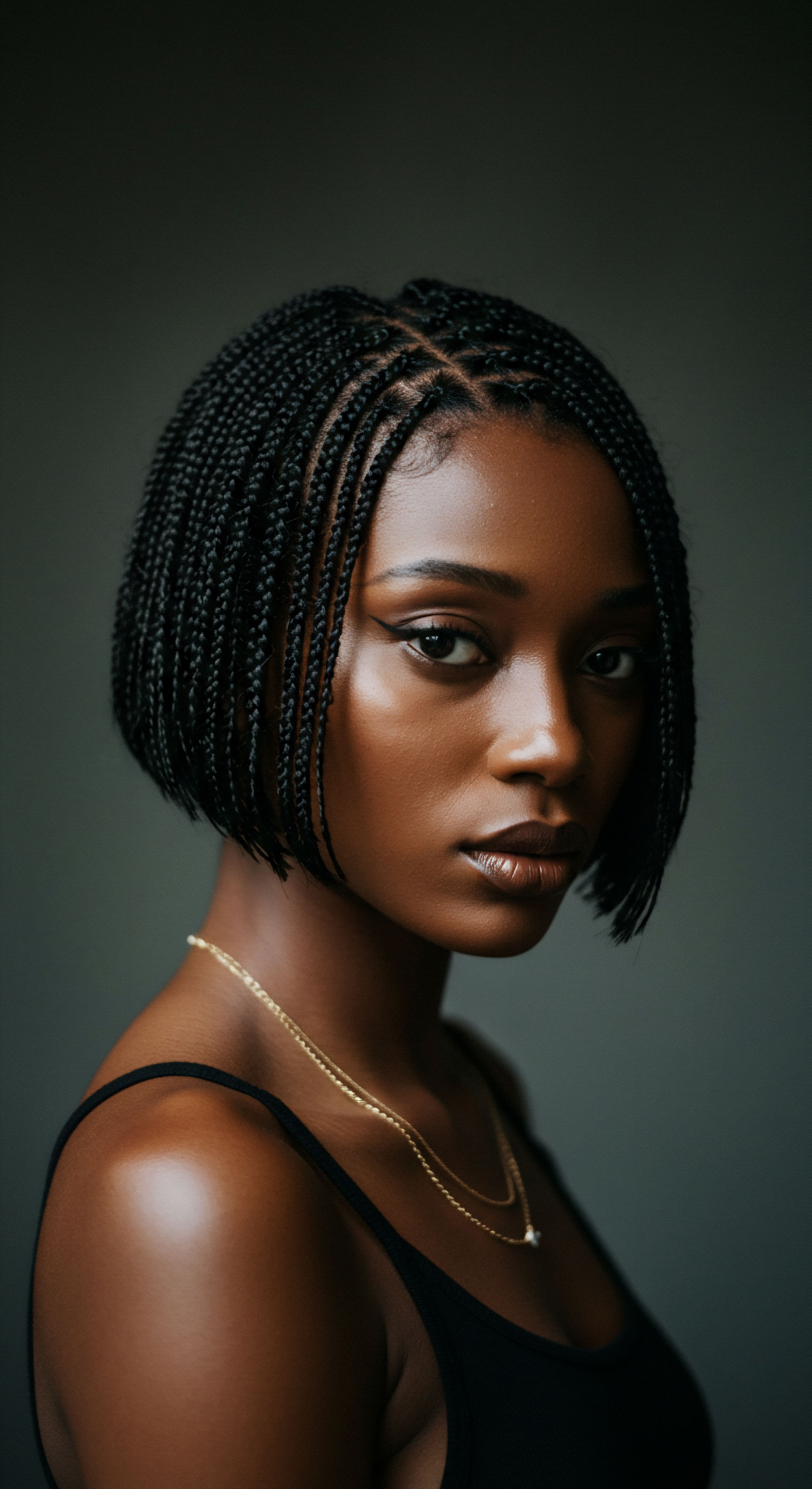
Ritual
Stepping from the foundational understanding of hair’s nightly needs, we turn now to the deliberate actions and specific items that shape our evening hair rituals. This is where intention meets tangible aid, where the gentle practices of the night lay the groundwork for vibrant strands in the morning. Our choices here are not arbitrary; they are guided by a desire to preserve, to hydrate, and to minimize the daily wear that hair endures. It is about crafting a routine that feels both purposeful and comforting, a quiet moment of care before rest.

What Material Protects Hair During Sleep?
At the forefront of night care tools stand the protective coverings. The most widely recognized and recommended are those made from smooth, non-absorbent materials. These fabrics are chosen for their ability to reduce friction, which is a primary cause of mechanical damage and frizz. Cotton, while a common pillowcase material, possesses a rougher surface and absorbent qualities that can strip hair of its natural oils and create tangles as one shifts during sleep.
- Silk Bonnets ❉ These offer a gentle cocoon for hair, minimizing friction against bedding. Their smooth surface allows hair to glide rather than snag, preserving delicate strands and curl patterns. They are particularly helpful for those with curly or coily textures, which are more prone to frizz and breakage. A study published in the Journal of Cosmetic Dermatology indicated that silk’s smooth surface can reduce hair friction by up to 43% compared to other pillowcase materials.
- Satin Bonnets ❉ Often a more accessible alternative to silk, satin provides similar benefits. It creates a slick surface that reduces friction and helps retain moisture, preventing dryness and brittleness. Satin bonnets are highly effective in preserving hairstyles, from twist-outs to braids, by minimizing disruption to the hair’s structure overnight.
- Silk or Satin Pillowcases ❉ For those who prefer not to wear a bonnet or scarf, a silk or satin pillowcase serves as an excellent line of defense. The smooth surface ensures that hair glides effortlessly across the pillow, reducing tangles, frizz, and breakage. These materials are also less absorbent than cotton, helping hair retain its natural moisture and applied products.
The choice between a bonnet, scarf, or pillowcase often comes down to personal preference, comfort, and the specific style being protected. Many find that a combination, such as a loose protective style with a bonnet, offers the most comprehensive safeguarding.

How Do Protective Styles Aid Night Care?
Beyond external coverings, the way hair is styled before bed plays a significant role in its night care. Protective styles minimize manipulation, keep ends tucked away, and reduce the surface area exposed to friction. This proactive approach helps to maintain hair length and overall health.
- Loose Braids or Twists ❉ Creating one or more loose braids or twists before sleep can prevent tangling and knotting, especially for longer or highly textured hair. This method allows for a gentle way to maintain the natural pattern of curls or waves while ensuring a protective barrier during sleep. It is important to avoid tight braiding, which can cause tension on the scalp and lead to issues like traction alopecia.
- The Pineapple Method ❉ This technique involves gathering all hair loosely at the very top of the head, often secured with a soft scrunchie. This elevated position keeps the bulk of the hair from being crushed or friction-damaged against the pillow, preserving curl definition and volume. It is particularly popular for those with curly or wavy textures.
- Bantu Knots or Flat Twists ❉ For more defined curl preservation or to stretch hair without heat, smaller bantu knots or flat twists can be created. These styles keep sections of hair isolated and protected, contributing to moisture retention and reduced manipulation.
The essence of these styles lies in their ability to minimize stress on the hair shaft and scalp, allowing hair to rest in a state of minimal disturbance.
Choosing the right material and style for nighttime protection significantly reduces friction and helps hair retain its essential moisture.
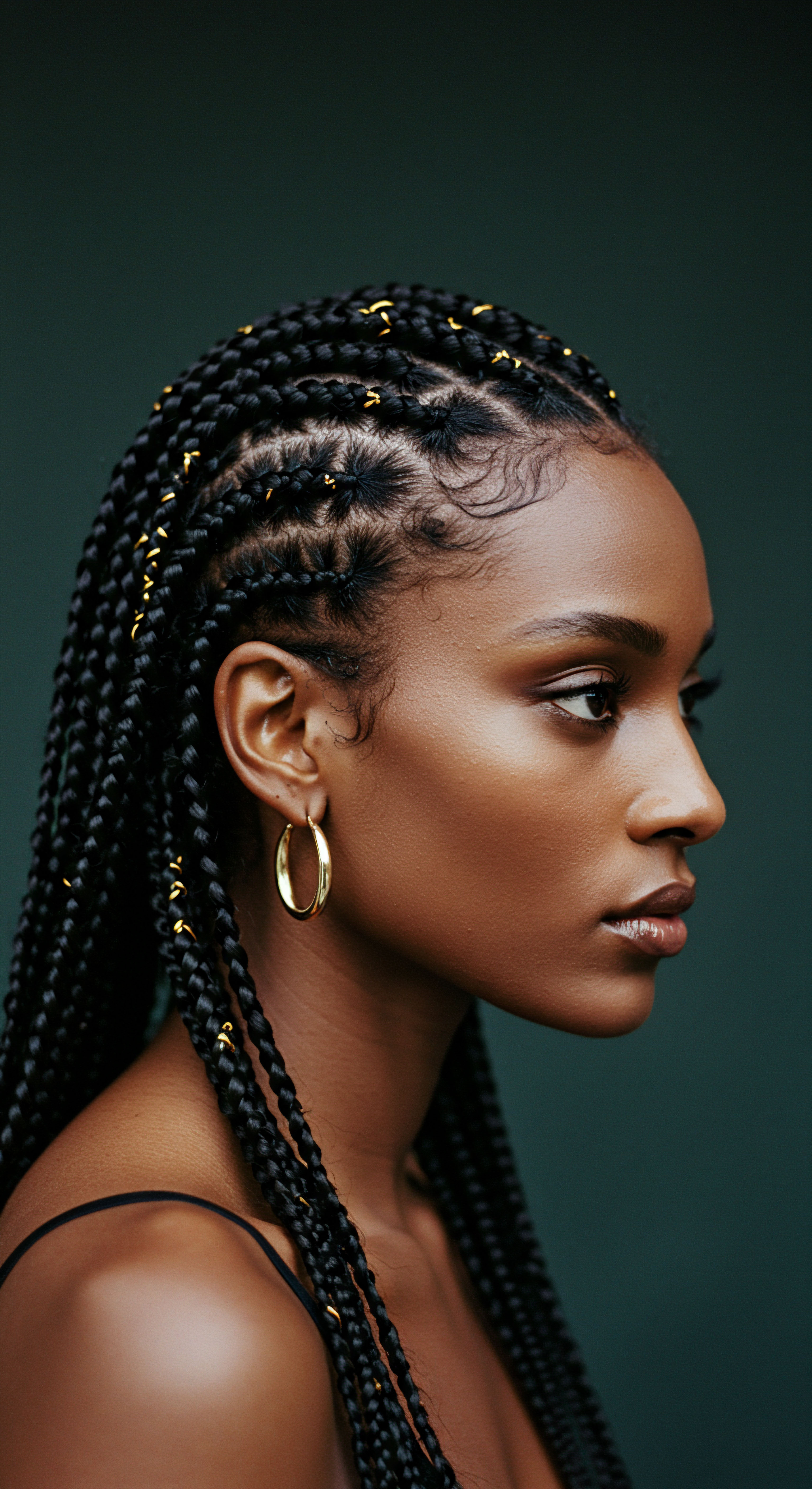
Nourishment as a Nighttime Companion
The physical tools of protection are beautifully complemented by the application of nourishing products. Nighttime offers an extended period for products to deeply absorb and work their magic without the interference of environmental factors or daily styling.
- Leave-In Conditioners ❉ Applied to damp or dry hair, a good leave-in conditioner provides a foundational layer of moisture that helps to hydrate and soften strands overnight. For high porosity hair, which tends to lose moisture quickly, a leave-in can be particularly beneficial.
- Hair Oils and Butters ❉ Sealing in moisture is a critical step, especially for textured hair. Oils like jojoba, argan, coconut, or lighter options like grapeseed, can be applied to the lengths and ends of the hair after a leave-in conditioner. Heavier butters, such as shea or mango, provide an occlusive layer that locks hydration within the hair shaft. This approach is often described by the “LOC method” (Liquid, Oil, Cream), where a liquid (water or leave-in) is followed by an oil, and then a cream to seal.
These products work in concert with protective coverings to ensure hair remains supple, hydrated, and resilient through the night, preparing it for the day ahead.

Relay
Moving beyond the immediate actions of night care, we consider the deeper connections that underpin these practices. What does the consistent use of night care tools truly signify, not just for the individual strand, but for the larger landscape of hair health and identity? This section seeks to unravel the interplay of science, culture, and personal well-being, demonstrating how seemingly simple tools become agents of profound impact.
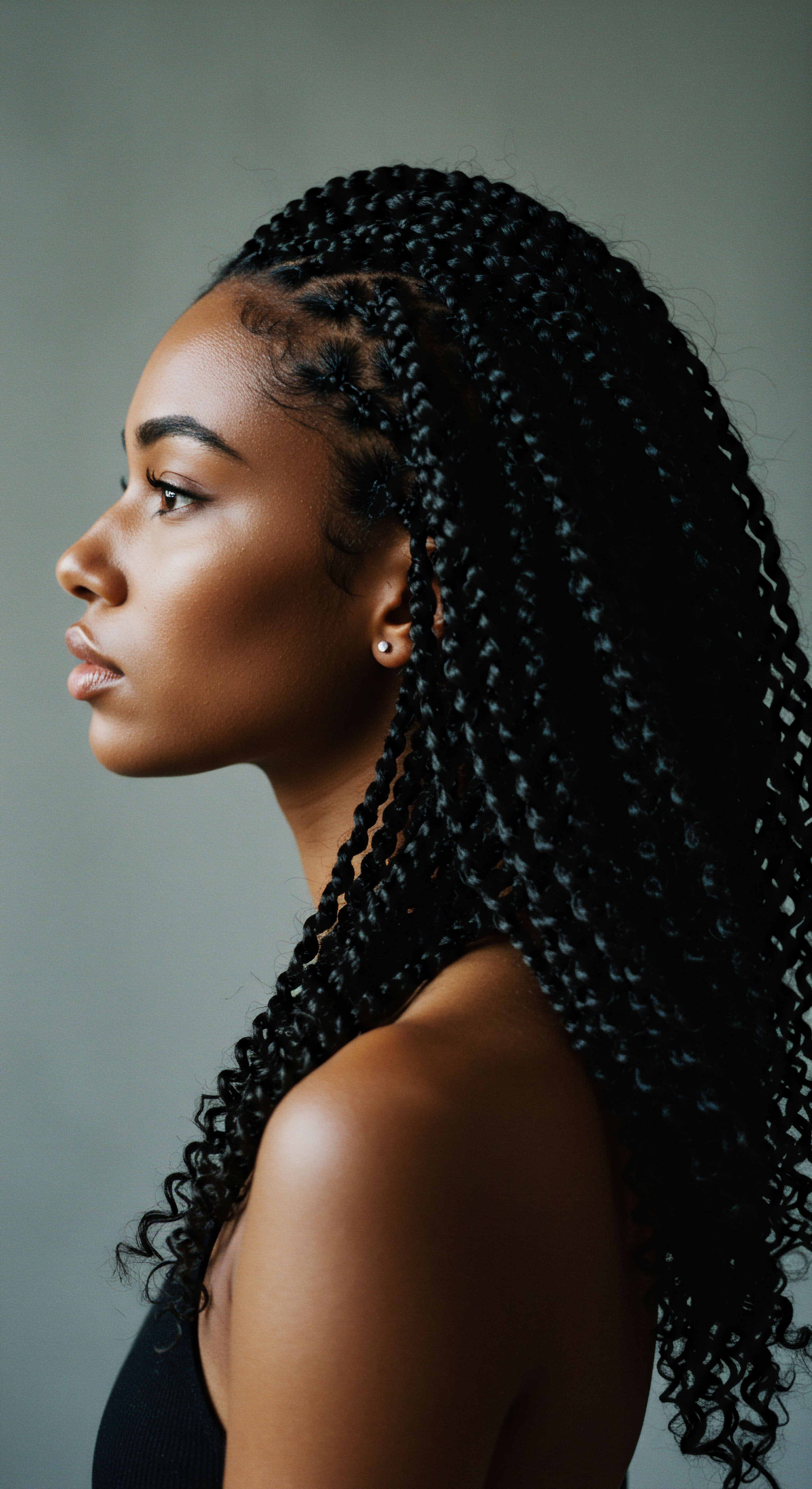
How Does Friction Affect Hair at a Microscopic Level?
The unseen enemy of sleep, friction, exerts a measurable impact on hair structure. Each strand of hair is covered by a protective outer layer, the cuticle, which consists of overlapping scales. These scales, much like shingles on a roof, lie flat when hair is healthy and moisturized. During sleep, as hair rubs against rough surfaces like cotton pillowcases, these scales can lift, fray, or even break off.
This damage compromises the hair’s natural barrier, leading to increased porosity, accelerated moisture loss, and a rougher texture that is more prone to tangles and frizz. The mechanical stress from tossing and turning, particularly with the weight of the head, contributes to this wear and tear. The reduction of this friction, through the use of smooth fabrics, directly translates to preserved cuticle integrity, thus supporting hair’s ability to retain hydration and maintain its inherent smoothness. Research indicates that reducing friction by even a small percentage can lead to significant improvements in hair texture and a decrease in breakage over time.

What Is the Connection Between Sleep Quality and Hair Growth?
Beyond the direct physical protection offered by night care tools, the quality of sleep itself holds a profound, though often overlooked, connection to hair health. Our bodies undergo significant repair and regeneration during rest, a process that extends to our hair follicles. The hair growth cycle, which includes phases of active growth (anagen), transition (catagen), and rest (telogen), is intimately linked to our physiological rhythms. Disruptions in sleep can directly interfere with this delicate balance.
Studies show that poor sleep can lead to increased levels of cortisol, often referred to as the stress hormone. Elevated cortisol can prematurely push hair follicles into the resting phase, leading to increased shedding, a condition known as telogen effluvium. Furthermore, melatonin, a hormone known for regulating sleep cycles, has also been shown to play a role in stimulating hair growth. Reduced melatonin levels due to insufficient sleep can therefore impact hair vitality.
In essence, providing hair with a protected environment at night, alongside ensuring adequate, restorative sleep, creates a synergistic effect that supports robust hair growth and minimizes shedding, reinforcing the idea that beauty rest extends far beyond the skin. A 2015 review in the Journal of Clinical and Aesthetic Dermatology underscored how lifestyle factors, including inadequate rest, contribute to various forms of hair loss, including telogen effluvium and even androgenetic alopecia in genetically predisposed individuals.
The quiet efforts of night care extend beyond immediate appearance, contributing to the hair’s fundamental health and growth cycles.
The selection of tools like satin bonnets and silk pillowcases, therefore, becomes more than a simple aesthetic choice; it becomes a deliberate act of preserving the hair’s structural integrity and supporting its natural biological processes. This proactive approach to night care, rooted in both scientific understanding and cultural practices, contributes to a holistic vision of hair well-being that acknowledges the intricate connections between our nightly habits and the long-term vitality of our strands.
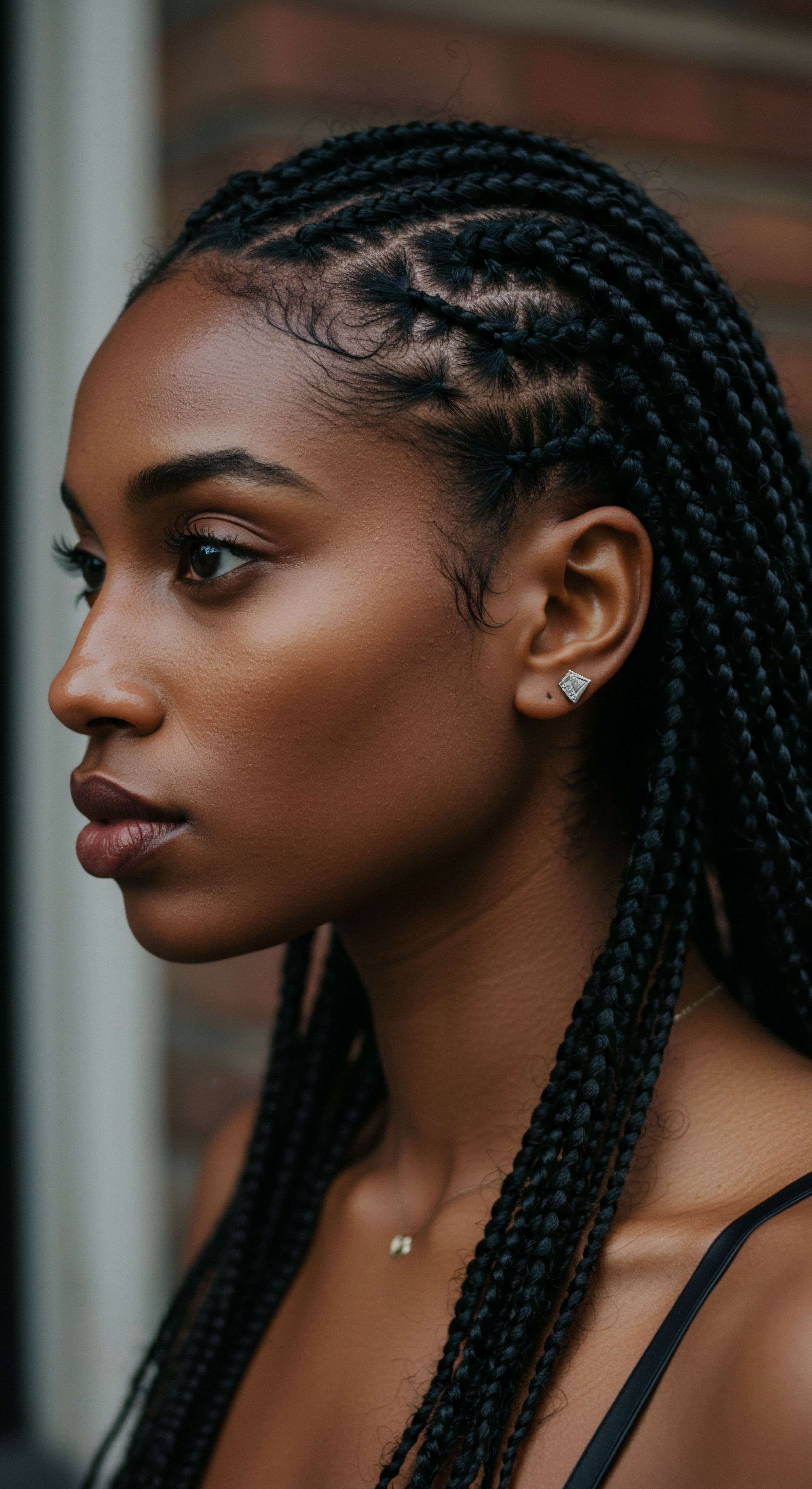
The Cultural Significance of Nighttime Hair Rituals
The practice of covering hair at night, particularly within Black communities, carries a weight of cultural significance that stretches back generations. While modern tools like satin bonnets offer scientific benefits of friction reduction and moisture retention, their adoption also echoes a long-standing tradition of protecting hair as a valuable asset. Historically, hair has held deep meaning in African cultures, often symbolizing identity, status, and spirituality. The careful preservation of hair, especially overnight, became a quiet act of resistance and self-care during times of oppression.
Enslaved Black women, for instance, used head coverings not only for practical protection but also as a means of maintaining dignity and expressing cultural ties in a hostile environment. This legacy continues to shape contemporary practices, where the bonnet or scarf is not just a tool but a symbol of heritage, self-respect, and a commitment to maintaining the health of textured hair. It represents a continuity of care passed down through families, a shared understanding of the unique needs and beauty of Black hair. This connection elevates the act of night care from a mere routine to a ritual imbued with personal and collective history.
| Material Type Cotton |
| Surface Texture Rough |
| Moisture Absorption High |
| Primary Hair Benefit Increased friction, moisture stripping |
| Material Type Satin |
| Surface Texture Smooth |
| Moisture Absorption Low |
| Primary Hair Benefit Reduced friction, moisture retention |
| Material Type Silk |
| Surface Texture Very Smooth |
| Moisture Absorption Very Low |
| Primary Hair Benefit Minimal friction, optimal moisture retention |
| Material Type The choice of material significantly impacts hair health by influencing friction and moisture balance. |

Reflection
As the quiet of night descends, the gentle practices of hair care unfold, transforming what might seem a simple routine into a profound act of self-reverence. The tools we select for our textured strands — the soft caress of a silk bonnet, the strategic placement of a loose braid, the hydrating touch of a chosen oil — are more than just objects or methods. They are expressions of a deep, knowing care, rooted in both scientific understanding of hair’s delicate structure and the rich, enduring wisdom passed through generations.
Each night, as we prepare our hair for rest, we participate in a quiet conversation with our heritage, acknowledging the unique beauty and resilience of textured hair. This thoughtful approach ensures that our strands not only survive the night but truly flourish, awakening refreshed and ready to greet the day with their full, vibrant character.
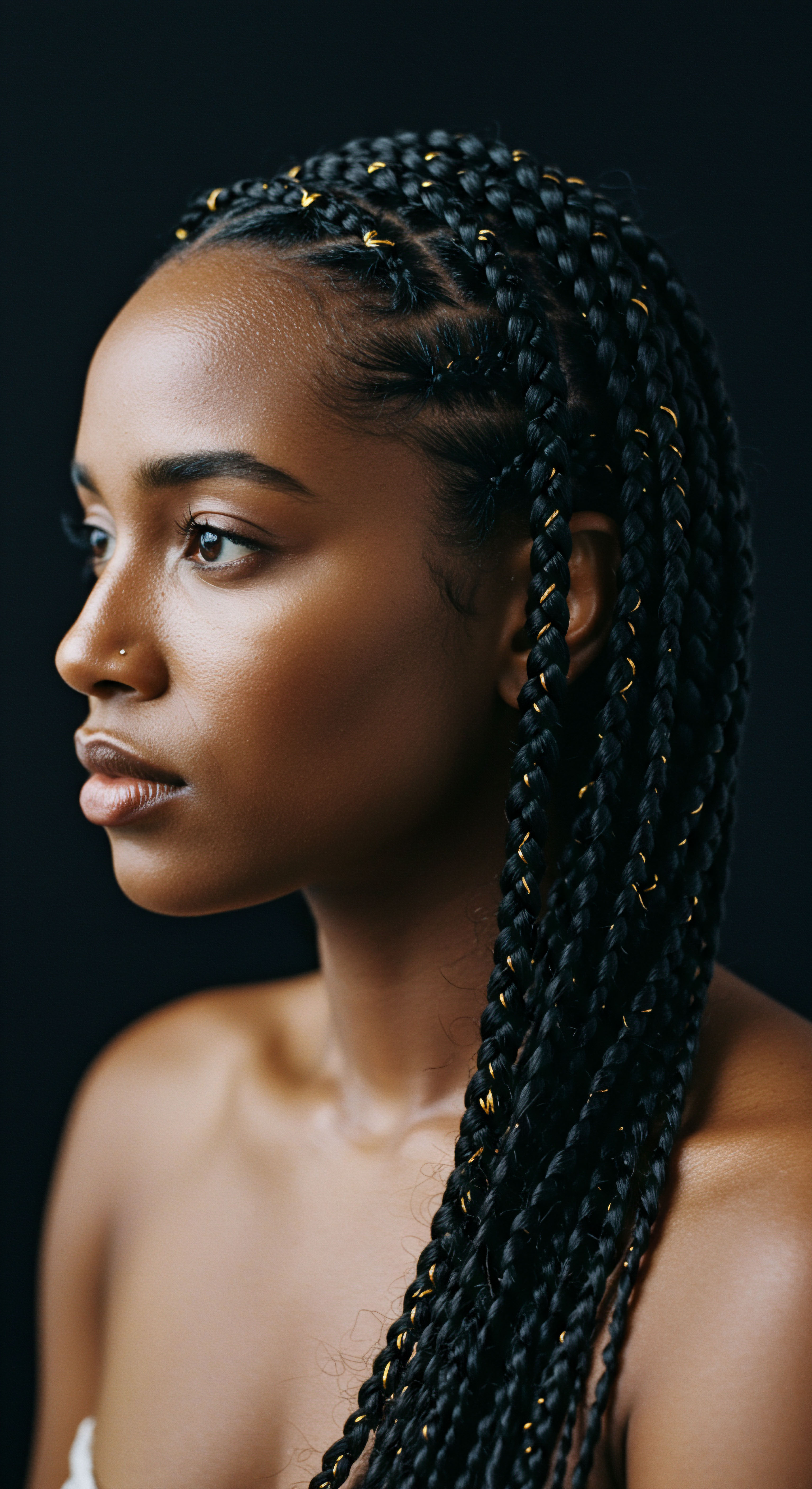
References
- Hata, T. (1987). Studies on the properties of silk sericin and its application to cosmetics. Journal of the Society of Cosmetic Chemists of Japan, 21(2), 125-130.
- Engel, K. H. & Hoppe, U. (1988). Hair washing with sericin and pelargonic acid. Journal of the Society of Cosmetic Chemists, 39(1), 1-10.
- Yamada, H. et al. (2001). Moisturizing property of a lotion containing 1% sericin and 4% D-glucose. Journal of Cosmetic Science, 52(4), 227-236.
- Padamwar, P. A. & Daithankar, A. V. (2005). Silk sericin as a film-forming and moisturizing agent in cosmetics. International Journal of Cosmetic Science, 27(6), 309-315.
- Khumalo, N. P. et al. (2010). ‘Relaxers’ damage hair ❉ Evidence from amino acid analysis. Journal of the American Academy of Dermatology, 62(3), 402-408.
- Abbas, S. et al. (2015). Lifestyle factors and hair loss ❉ A review. Journal of Clinical and Aesthetic Dermatology, 8(4), 25-32.
- Schwartz, A. M. & Knowles, D. C. (1963). Frictional effects in human hair. Journal of the Society of Cosmetic Chemists, 14(1), 45-56.
- Bhushan, B. et al. (2014). Friction dynamics of straight, curly, and wavy hair. Journal of the Royal Society Interface, 11(99), 20140608.
- Hata, T. (1987). Studies on the properties of silk sericin and its application to cosmetics. Journal of the Society of Cosmetic Chemists of Japan, 21(2), 125-130.
- Reid, A. E. & Khumalo, N. P. (2019). Hair breakage ❉ a systematic review of the literature. International Journal of Dermatology, 58(8), 885-894.